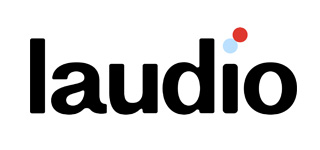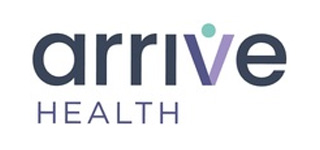The university health network helped employees better cope with anxiety, while saving $17 in face-to-face mental health costs for every dollar spent on the digital program.
St. Luke’s University Health Network is a nonprofit health system with more than 15,000 employees providing care and services at 12 hospitals and more than 300 outpatient locations.
THE PROBLEM
Healthcare workers have higher rates of work-related stress, anxiety and depression than the general population. SLUHN has a self-insured medical plan. Baseline data indicated that emotional and behavioral health issues were affecting employees and their dependents.
However, there were many barriers affecting the delivery of cognitive behavioral therapy, including cost, stigma, provider supply/demand mismatch, scheduling delays, and the lack of ability to reach the appropriate patients. The problem the healthcare organization faced was that there was inadequate access to mental healthcare.
“We leveraged support from senior leadership and stakeholders from human resources, behavioral health, employee wellness, information technology and the innovations team to provide input and expertise into the project,” said Amy Previato, network director, employee wellness, at St. Luke’s University Health Network. “Our goal was to offer clinically effective and cost-effective online cognitive behavioral therapy for anxiety, stress and depression to employees and spouses.”
PROPOSAL
Research has shown that Internet-delivered cognitive behavioral therapy is a viable and effective alternative to face-to-face treatment, Previato said. Furthermore, such therapy, with some input from a therapist, can be as clinically effective as face-to-face cognitive behavioral therapy and more cost-effective, she added.
“We partnered with AVIA to select an evidence-based solution named SilverCloud,” she reported. “SilverCloud is an online platform that offers 24/7 access to clinically proven programs based on cognitive behavioral therapy, mindfulness and positive psychology. It includes both self-guided and coached interventions.”
An SLUHN-sponsored supporter would interact with a large group of employees through their treatment and education, matching the intensity of the intervention with individual needs. The supporter would guide patients through asynchronous communication via the SilverCloud application, and provide nonclinical feedback, recommendations and support.
Participant progress would be measured at intake and periodically throughout their program using industry-standard tools, such as the Generalized Anxiety Disorder 7 and PHQ-9 (a nine-question instrument to measure depression), Previato explained. Participants would be evaluated for caseness, recovery, showing reliable change and reliable recovery, she added.
The goals were to use SilverCloud to:
- Reduce healthcare utilization costs and stigma.
- Compare cost-effectiveness of treatment compared to face-to-face treatment.
- Create a viable alternative to face-to-face treatment to free up the backlog and increase accessibility.
Participants in need of services exceeding SilverCloud’s capability would be referred to the employee assistance program or other resources as appropriate.
MEETING THE CHALLENGE
After a custom build, programs for anxiety, stress and depression were available for free, anonymously and confidentially, to SLUHN employees and spouses. After creating their account, participants access and progress through the program modules at their own pace, at their convenience, from a computer, tablet or smartphone.
“Participant satisfaction, clinical outcomes and cost-effectiveness are measured and evaluated,” said Phil Mazur, wellness supporter at St. Luke’s University Health Network. “Additionally, account creation/number of participants is a primary area of focus. In order to evaluate clinical outcomes, user satisfaction and cost-effectiveness, we first needed users.
“A multi-tiered marketing plan was developed to promote and normalize SilverCloud as a resource for mental healthcare,” he continued. “The organization sought to not only create awareness about SilverCloud and educate people about the benefits of using it, but to begin a crucial conversation about self-care and addressing mental health needs.”
Safe, friendly approaches were incorporated into the marketing plan to reduce stigma and drive employees and their spouses to use the platform, he added. Initial marketing strategies included an in-home mailer, a refrigerator magnet, quarterly e-mails, intranet postings, presentations at new-hire orientation, posting materials throughout the network in staff-only areas, and providing information during benefits fairs.
“This led to an initial group of early adopters who created accounts and began using the platform, while also contributing to ongoing account creation and platform use by the general employee population,” he said. “Subsequent marketing efforts included targeted approaches to ensure the resource was being brought to the attention of those that might benefit the most from it.”
Additionally, to keep SilverCloud top of mind, the program was included in presentations to high-impact groups, including management, nursing residency groups and medical residents. Though the anonymity and confidentiality of the platform were always emphasized in marketing efforts, the planning team recognized there may have been potential users who would appreciate having the opportunity to interact, put a face to the program, and ask questions of the supporter and the creators of the platform.
“A series of on-site demonstration booths were scheduled across the network, which were called ‘SilverCloud Roadshows,’” Mazur said. “They were in prominent locations, including cafeterias, lobbies and conference rooms. Finally, we allowed completion of a SilverCloud program to count as a Healthy Living Activity in our 2018 annual Employee Wellness Health Assessment.”
RESULTS
The SLUHN SilverCloud project goal for participation was 1,000 accounts, with a stretch goal of 1,200. Some 1,161 accounts were created in the first year, and 1,300 additional accounts were created in the first three months of the second year. More than 3,000 employees and spouses have used the program, which is a significant number of users on which to measure clinical outcomes.
“The online solution offers users the convenience of anytime access from anywhere,” Previato said. “Our implementation did not require users to identify themselves at account creation, thereby enabling a level of comfort from users who may not otherwise have accessed SilverCloud or face-to-face mental health services.”
The SLUHN implementation also included the hiring of a supporter (MSW) to interact asynchronously with participants through the technology/platform. This appealed to those seeking guidance, accountability and/or cognitive behavioral therapy that wasn’t only delivered via self-service, Previato said.
“Our users report a 97% satisfaction rate with the program,” she said. “At the completion of each module, the platform assesses user satisfaction with various aspects of the program and user experience. The majority of users ‘agree’ or ‘strongly agree’ that their program was interesting, relevant, helpful and contributed to progress toward their goals.”
Validated assessments for depression (PHQ9) and anxiety (GAD7) are used at baseline, and regularly during program progression. The following definitions are established for measuring clinical effectiveness:
- Case. Occurs if a participant scores above the clinical threshold on the depression and/or anxiety assessment at signup.
- Recovery. Occurs if the participant subsequently scores below the clinical threshold on the depression and/or anxiety assessment.
- Reliable change. Occurs if a participant’s score drops a predetermined number of points on the depression and/or anxiety assessment.
- Reliably recovered. Occurs if the predetermined point-reduction drops the individual below the clinical threshold on the depression and/or anxiety assessment.
In both the space from depression and space from anxiety programs, there was a downgrading of clinical acuity based on PHQ9 and GAD7 scores taken before, during and after program use.
In reviewing improvement and clinically significant improvement by baseline severity in the space from depression program, out of 1,042 responders to PHQ9, 71% of moderately severe users report clinically significant improvement, and 50% of severe users report clinically significant improvement.
In reviewing improvement and clinically significant improvement by baseline severity in the space from anxiety program, out of 1,038 responders to GAD7, 52% of moderate users report clinically significant improvement and 62% of severe users report clinically significant improvement. The organization also noted a leveling of employee assistance program utilization concurrent with the rollout of SilverCloud.
“SLUHN used network data to show the cost of face-to-face mental health treatment per employee,” Previato explained. “Cost-effectiveness was demonstrated by comparing the SilverCloud cost for the users meeting the clinical threshold for diagnoses at SilverCloud sign-up to the cost that would have been incurred had they sought face-to face treatment.”
Cost-effectiveness was also demonstrated by comparing what the users who had reliable recovery (defined as reliable reduction – four points for PHQ-9, or six points for GAD-7 – and fell below the clinical threshold) would have cost the network had they gone for face-to-face treatment, compared to the cost for them to use SilverCloud.
“Cost-effectiveness was also demonstrated by showing that the network’s all-time investment for the SilverCloud program and FTE for the two-year pilot is less than what it would have cost to treat the reliably recovered users in face-to-face treatment,” Previato said. “We saved $17 for every $1 spent on SilverCloud for users who met the clinical threshold for diagnosis.”
ADVICE FOR OTHERS
“The success of this project is attributable to thorough assessment, planning, implementation, process and outcome evaluation,” Previato said. “The team was careful to know the population, stay in tune with the barriers, systematically address barriers, and weave the solution through the organization in various ways.”
Staff was able to gain acceptance for the technology by making it palatable to different parts of the population. Staff began an important conversation about mental health and self-care, normalizing the topics and making them acceptable, she said.
“We intended to make the program sustainable, not treat it as a gimmick or flavor of the month, but an ongoing commitment for the organization and our employees,” she advised. “Underscoring this, the platform and project were included recently as a case study in the SLUHN HIMSS Stage 7 EMRAM Network reaccreditation process.”
Previato encourages peers using similar technologies to begin by deciding on what levels of intervention and treatment the organization wants to provide.
“Self-guided versus supported technologies differ in their targeted audiences, and thus, expected effectiveness/outcomes,” she said. “For example, a meditation app may be proven to have statistically significant results in lowering stress levels, but that is quite different [from] a supported app based on cognitive behavioral therapy meant to help reduce the acuity of symptoms for depression and anxiety.”
Make sure to do research and pick a platform or tool that is proven clinically effective, while also able to meet the organization’s expectations, she added. For example, SLUHN decided to ensure the anonymity and confidentiality of participants, which likely increased engagement, but directly limited the ability to measure certain downstream effects caused by the utilization of services.



